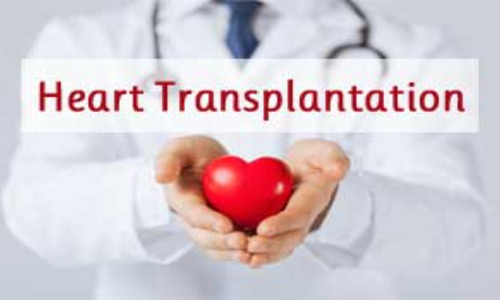
Heart transplantation is limited by organ availability. Transplant programs involve marginal donors with risk characteristics include older age, size mismatch, left ventricular hypertrophy, poor ejection fraction, and extended donor ischemia durations. Brain death or circulatory death is required for deceased organ donation . All brain functions stop after brain death. Cold solution flushing stops organ function during DBD donor organ assessment and procurement. Circulatory death donors have irreparable damage and cannot be saved. After treatment is discontinued, the donor dies of circulatory failure (no blood pressure, pulse, or heartbeat). Before organ harvesting, circulatory death is certified after a 5-minute standoff.
Ischemic damage threatens all donor organs. Ischemic damage destroys pump and electrical performance in DCD hearts. Recent breakthroughs in machine perfusion (MP) have permitted resuscitation of DCD hearts and successful transplant. DCD hearts may boost donor numbers by 50%.
DCD Heart Recovery
Direct procurement and ex situ perfusion (DPP) and normothermic regional in situ perfusion (NRP) are DCD heart procurement methods.
DPP uses ex situ MP. After circulatory death is confirmed, the heart is flushed with cold crystalloid cardioplegia, obtained, back table instrumentation, and reperfused with normothermic blood. Only TransMedics Organ Care System (OCSTM) (Andover, MA, USA) is FDA-approved for ex situ perfusion of DCD hearts. OCS machine priming before cardiac recovery takes 1100 mL donor blood. Cannulated aorta and pulmonary arteries and LV vent avoid distension. The OCS system keeps the heart normothermic and beating throughout resuscitation and transfer . Lactate metabolism, physical examination, and coronary flow predict heart function and organ viability. Before implant, cardioplegia freezes the heart.
NRP uses open cardiopulmonary bypass (CPB). Death declaration and standoff follow DCD protocol. The donor right atrium and ascending aorta are cannulated for CPB. Before CPB thoraco-abdominal organ reperfusion, the aortic arch arteries are constricted to isolate brain circulation. Venting the innominate artery prevents brain circulation. Heart function recovers after 45–60 minutes. Weaning CPB allows cardiac function testing. After cardioplegia, the heart is carried in cold static storage, normothermic, or hypothermic MP storage.
DCD Heart Transplantation Evolution
DCD hearts are not new. Dr. Christiaan Barnard used NRP to accomplish the first DCD donor heart transplant in 1967. DCD was abandoned due to brain death criteria and ischemia heart damage concerns. Denver Children’s Hospital transplanted three pediatric DCD hearts in 2004. Ten years later, Sydney’s St. Vincent’s Hospital launched a DCD program using DPP In 2015, Papworth Hospital in Cambridge, UK completed NRP DCD heart transplants.
In 2019, the first adult DCD heart transplant was conducted in the US as part of a randomized controlled experiment comparing OCS to DBD cold storage. NYU conducted the first adult DCD NRP heart transplant in 2020. DCD heart transplants boost donor organ yield. Thoraco-abdominal NRP improves DCD liver and kidney transplant survival.
Results –
International studies reveal a 30-48% donor pool increase with DBD heart transplant results. Messer and colleagues analyzed DCD and DBD cardiac transplants. DCD 92% and DBD 96% had similar 90-day and 1-year survival. There was no significant difference in primary graft malfunction requiring extracorporeal membrane oxygenation (ECMO) (DCD 15% vs. DBD 6%, p = 0.12) or intra-aortic balloon pump (IABP) (DCD 32% vs. DBD 23%, p=0.28). There was also no significant difference in intensive care unit (ICU) or hospital durations of stay. 57 DCD transplant hearts were DPP and 22 NRP with OCS perfusion. Survival was comparable, but NRP transplants needed fewer ventilator days, dialysis, and hospital stays. US DCD heart multicenter trials randomized 180 patients to 90 OCS and 90 DBD hearts. Six- and 12-month post-transplant survival were similar. DCD hearts used 89%.
Ethics –
DCD heart transplant raises ethical issues. Circulatory death is irreversible cardiopulmonary failure. The phrase “irreversible” raises worries of breaking the deceased donor rule by restoring circulation to the thoraco-abdominal organs using NRP. Before intervention, the donor fulfilled requirements and was proclaimed dead. The obligatory standoff time indicates no autoresuscitation. NRP does not revive the patient or restore pre-withdrawal non-life-sustaining damage.
Before bypass, the head vessels are blocked and ventilated to address concerns about NRP resuming neurologic function.
It is vital to highlight that if the duration from removal of life support to death exceeds the permissible f-WIT for solid organ donation, donors stay on hospice and the process to death continues. In this situation, the donor may still be able to give additional tissue for transplant or study.
Summary of findings
Widespread use of DCD heart transplant has been hindered by ischemia damage. However, success of employing DPP and NRP procedures has led in exponential increase of DCD heart transplant in recent years. MP also allows the study of innovative therapies like gene therapy and mitochondrial transplant, which might repair and reimplant failing hearts.
Many advantages of DCD heart transplant encourage its broader spread adoption: enlarging the donor pool, shortening waiting periods, enhancing organ quality, boosting total organ yield per donor are among them.
References –
Schroder JN, Shah A, Pretorius V, et al. Expanding heart transplants from donors after circulatory death (DCD) – results of the first randomized controlled trial using the organ care system (OCSTM) Heart – (OCS DCD Heart Trial)J Heart Lung Transplant 2022;41:S72.
Smith DE, Kon ZN, Carillo JA, et al. Early experience with donation after circulatory death heart transplantation using normothermic regional perfusion in the United States. J Thorac Cardiovasc Surg 2022;164:557-568.e1.
Mohite PN, Umakumar K, Garcia-Saez, et al. Heart transplantation utilizing organs following donation after circulatory death (DCD). J Heart Lung Transplant 2022;41:S175-176.
